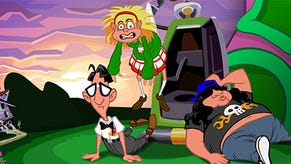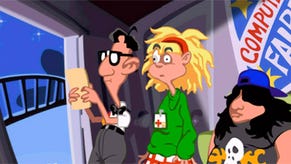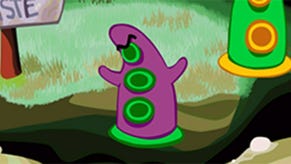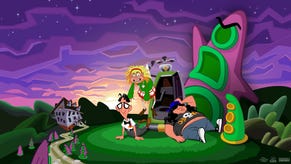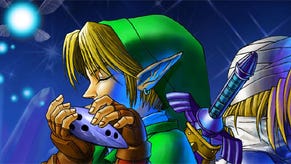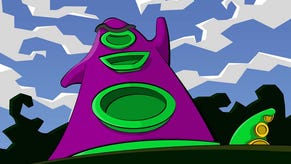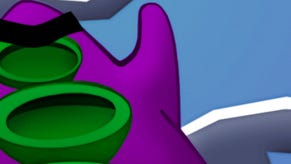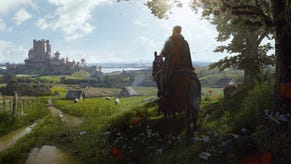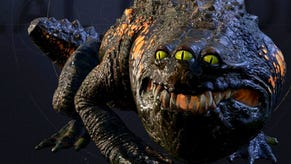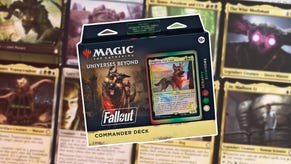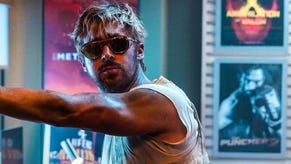Behind the Art of Day of the Tentacle
COVER STORY: LucasArts alumni Peter Chan and Larry Ahern chat about the challenges of making a "cartoon adventure" under the constraints of early '90s technology.
This article first appeared on USgamer, a partner publication of VG247. Some content, such as this article, has been migrated to VG247 for posterity after USgamer's closure - but it has not been edited or further vetted by the VG247 team.
Wrestling with Technology
Finding the art style for Day of the Tentacle posed one problem for Chan and Ahern; communicating it through the technology of 1993 was a different one altogether. Working with a 320 by 200 resolution and five floppy discs' worth of storage space, the two artists needed to employ some creative solutions to make Day of the Tentacle evoke the feeling of a classic Warner Bros. cartoon.
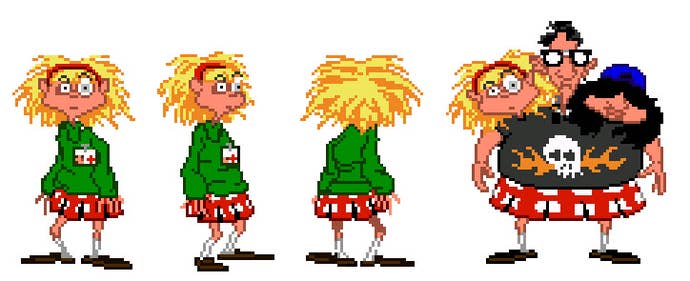
Peter Chan: Back in those days, first time, again, drawing with a mouse, and so, for me, I'm a traditional guy, so I like to draw with a pencil. So, for me to try to draw with a potato in my hand, and then, look up on a screen, and the pixels are the size of coasters. It was very hard and difficult, and so, for me, thankfully, when I came out of school, I started working at an advertising agency, so that's how I started learning how to do things in markers. So, I got pretty prolific with marker technique, in drawing with markers, and it was fast.
Larry Ahern: I think we hated [the technology] at the time. Because we felt like, this is a real thing, and you are tying my hands behind my back and making me stand on one foot to do it. So, I think the farther into it you get, and maybe the more distance you get from it, and you have perspective to look back on it. Then it's easier to kind of say, "Wow, that really was a certain skill set we had to have, there's a design process." I would liken it to illustrative graphic design. It's sort of like, it's not going to be an oil painting, but you're trying to take the core visual idea of an image and simplify it into a logo and a graphic design element. So, it's still pictorial, but it's kind of a different way of doing something pictorial.
We used to joke that we're learning to become mosaic artists, and I was actually pushing the company when we moved to our new bigger offices, I think it was around '95, '96, I was saying, we need to put mosaic tiles in an entryway with our characters, and make it so if you walk over it you can't really tell, it's so big, but then if you have a vantage point from a balcony somewhere where you can look down and realize, oh my God, it's giant pixel versions of our characters.

PC: Scanning started to surface, and the scanning machine was this big expensive machine, and no one really knew how to do it and use it and take advantage of it, and I remember I was really intimidated by this scanner. But the good thing was, I was able to draw everything traditionally, and then scan it, draw it and then do the marker version of it, and then scan it into the computer. And then once it's scanned in, then all the colors are in there, but the problem is, it totally pixelates. I don't know what the proper term is, but it just turns into this mosaic of pixels, and so, then, I would have to spend time cleaning it up as best as I can, just to make it look cleaner.
LA: At the time I remember we were very frustrated with [our tools], but one of the projects that I did was kind of a blast. It showed the complete torment and then the joy that you get from figuring it out. I actually did characters for the bonus level in Zombies Ate My Neighbors, and when you get to that bonus level at the end of the game, it unlocks a level that's the offices of LucasArts, and we put desks in there and had caricatures of every one of the employees sitting in there. So, basically, I guess a couple of artists had taken a stab at trying to do that, and they were struggling, and so Mike Ebert, the project leader on that, came up to me, and I think I was in between projects, and he said, “Hey, you want to take a stab at doing some caricatures of everybody in the building?” And, the deal was, unlike Day of the Tentacle, where, I don't know, it's like 15 by 20 pixels for their giant heads, these were smaller Nintendo characters, and I think it was like eight by eight, or something like that.

And he's like, “Yeah, take a shot at It, see if you can figure it out.” And I think I spent a couple hours in the morning just hammering on it, and I couldn't for the life of me figure it out. And then, all of a sudden, something clicked, I just got to the point where I realized, with these few pixels, there's only, like, four potential noses that you can make, and five possible head shapes. It was basically, there's only so many ways you can do it, but if you have three to five heads, eyes, noses, mouths, whatever, if you have a couple of each, you can recombine any of those in a certain way, and you can make Bob or Sam or Bill or whoever.
PC: Because I didn't play games, I didn't know the limitations. Like, what to pick up, what the players could pick up and not use, and gameplay. So, I didn't know anything about gameplay. All I was doing was just drawing pretty pictures, according to what Tim and Dave needed for the room. And so, because I didn't know gameplay, I would always put things in the foreground and the middleground, all these yummy things to pick up. And, I remember doing the drawing, and then walking across the parking lot into Dave and Tim's office and saying, “How's this look?” And, I think it took many rounds, but Dave and Tim were very patient with me, and they would say, “Peter, you can't do that, and put all this stuff in the foreground and middleground, because people will want to pick these things up.” So, it was hard for me, because of course, I wanted to populate the drawing with props and things like that that I thought would be interesting.
